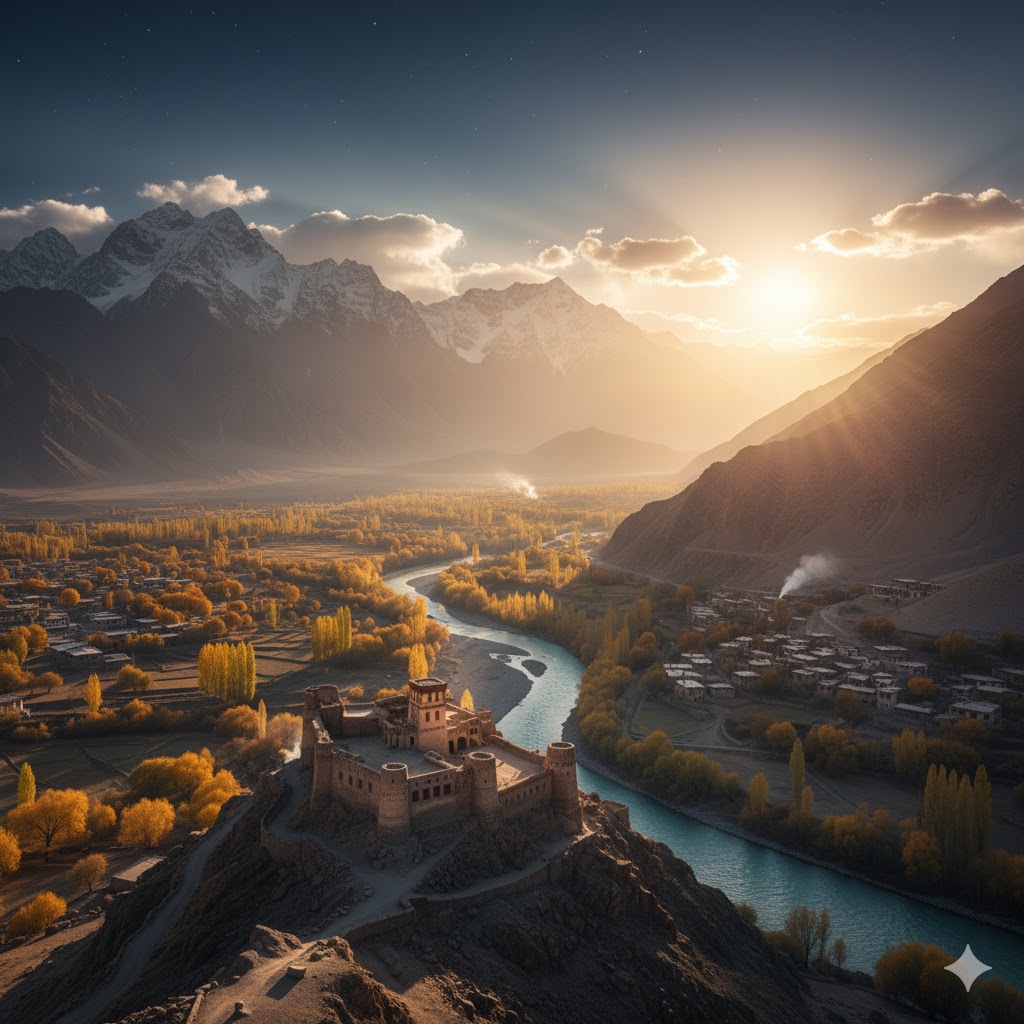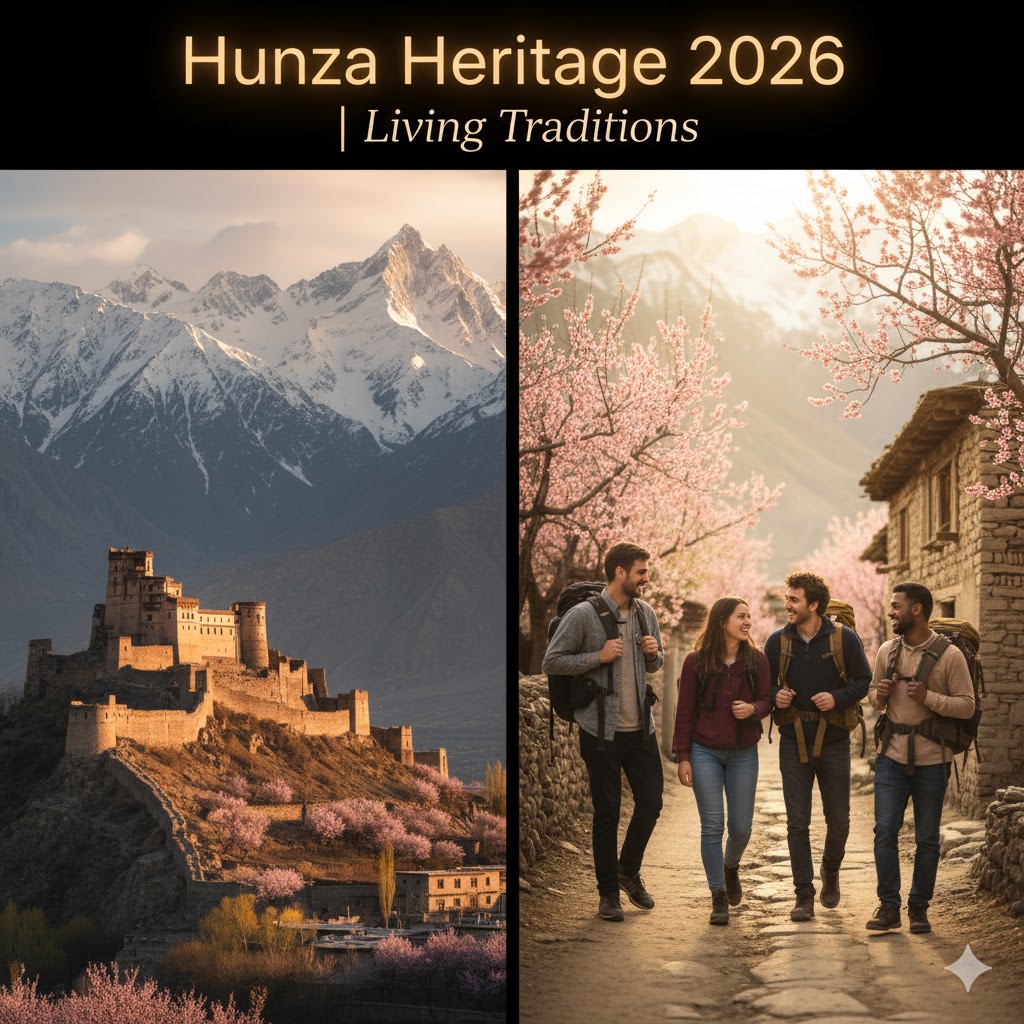Introduction: Journey into the Heart of Hunza’s Living Heritage
Perched in Pakistan’s northern Gilgit-Baltistan region, Hunza is more than a travel destination—it’s a living museum of heritage, where every stone, melody, and smile tells a centuries-old story. The Hunza Heritage Guide 2026 invites you to explore this valley’s majestic blend of history, language, and mountain hospitality. Whether you’re wandering through stone-built forts or sipping apricot tea under the watchful peaks of Rakaposhi and Ultar Sar, Hunza’s timeless traditions remain its greatest treasure.
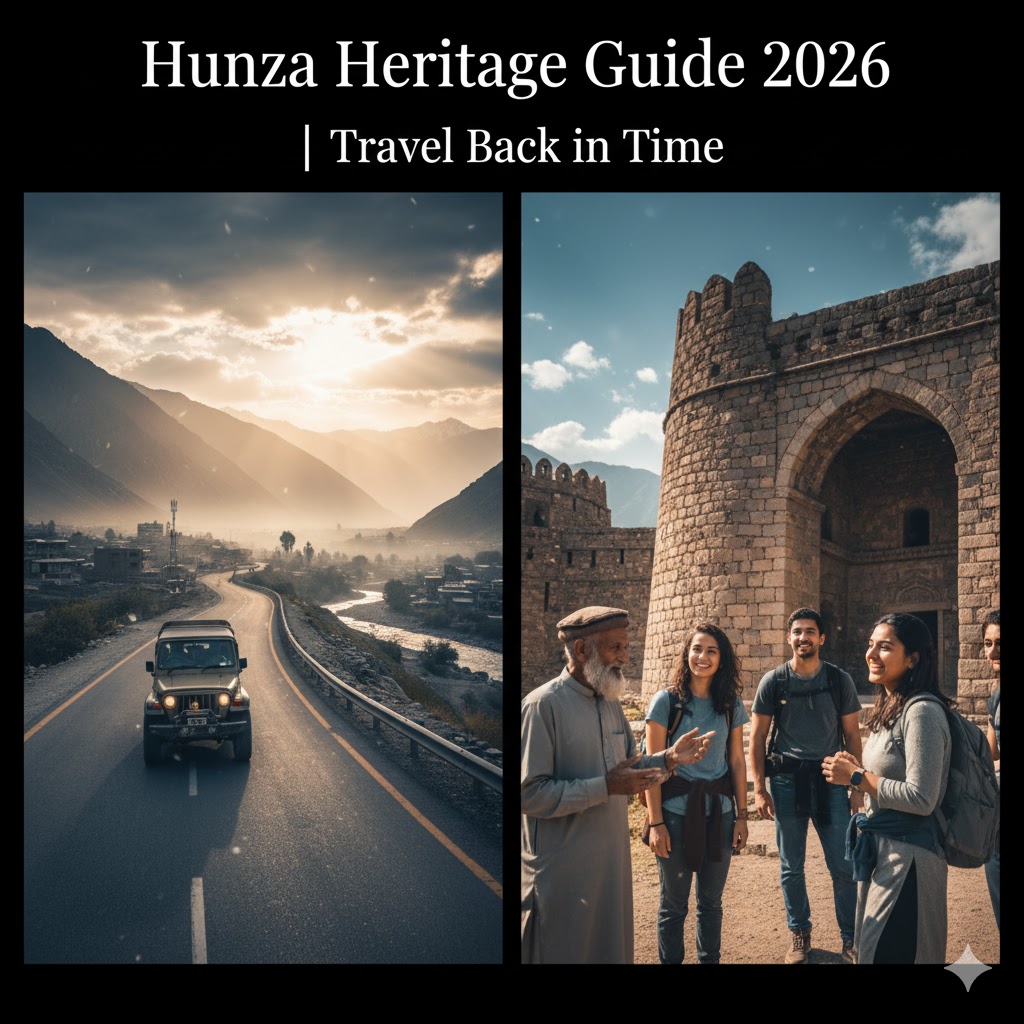
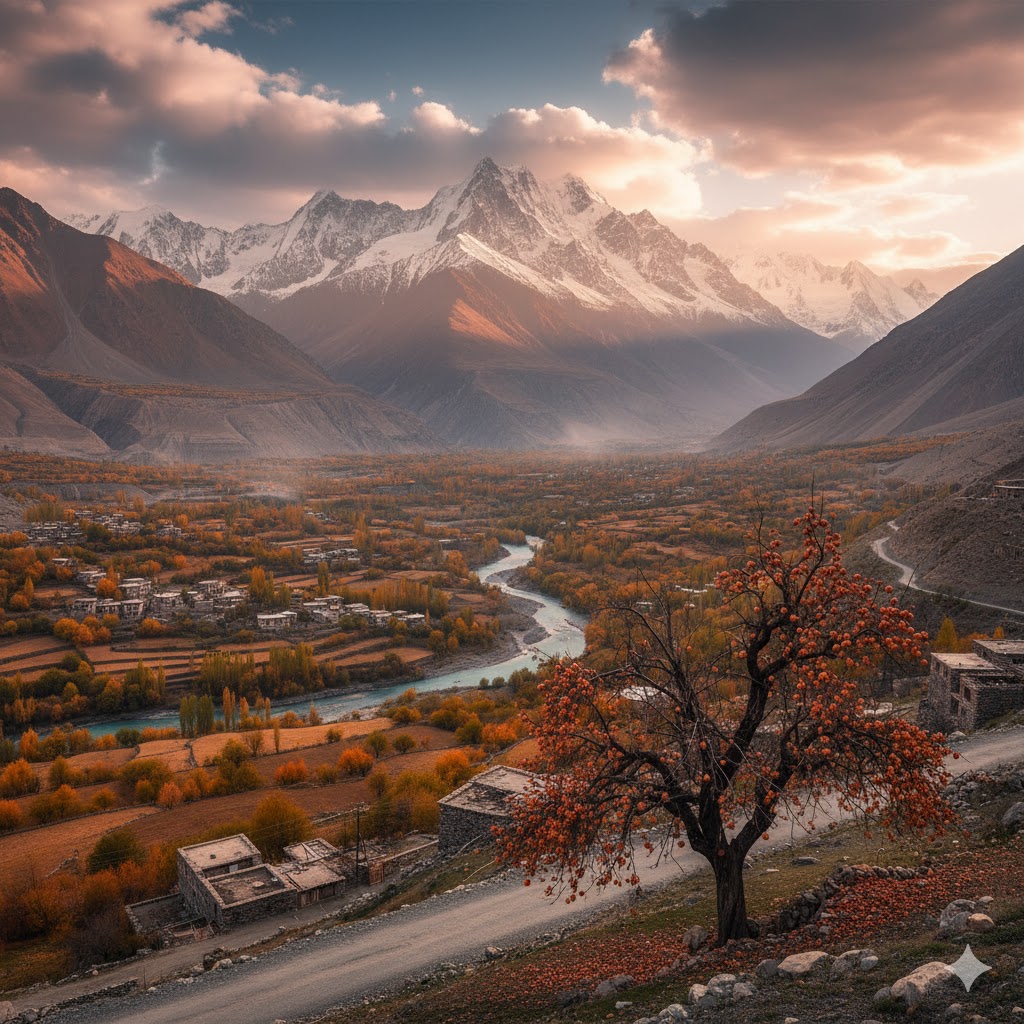
🕰️ Ancient Roots: Where Kingdoms Met the Mountains
Hunza’s heritage traces back over 900 years to the Burusho dynasty, whose ancient fortresses—Baltit Fort and Altit Fort—still stand tall as echoes of a regal past. Influenced by Silk Route travelers and Tibetan traders, Hunza’s architecture, dress, and cuisine fuse diverse civilizations. The people of Hunza proudly preserve their Burushaski language, oral storytelling traditions, and folk music that resonates during local festivals like Ginani and Taghm.
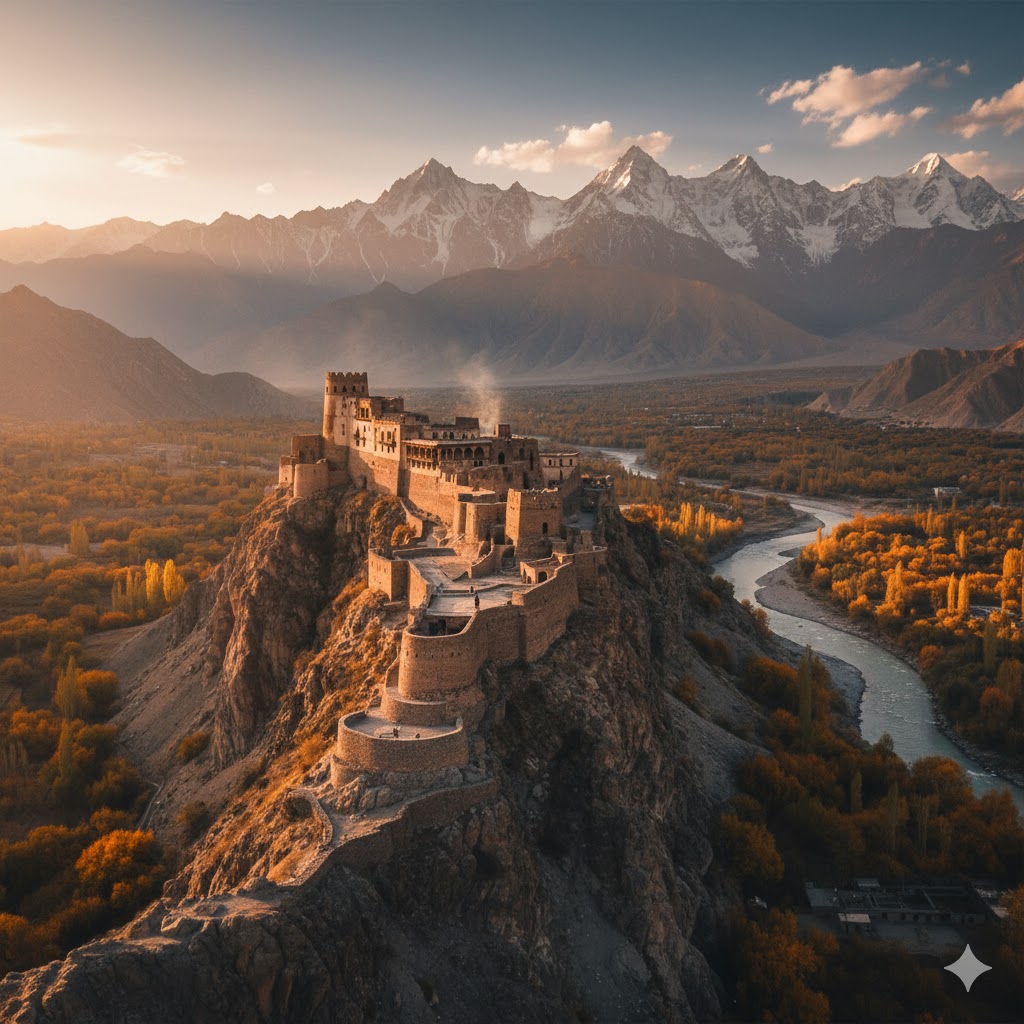
🏡 Village Life & Traditional Architecture
Hunza’s villages—Karimabad, Altit, Ganish, and Gulmit—reveal timeless craftsmanship. Each home is built using stone and wood, insulated against mountain winds. Rooftops dry apricots and walnuts, while community spaces called “Jata” serve as gathering hubs. In 2026, restoration projects led by the Aga Khan Cultural Service Pakistan (AKCSP) continue to preserve these architectural marvels, turning Karimabad into a model of sustainable heritage tourism.
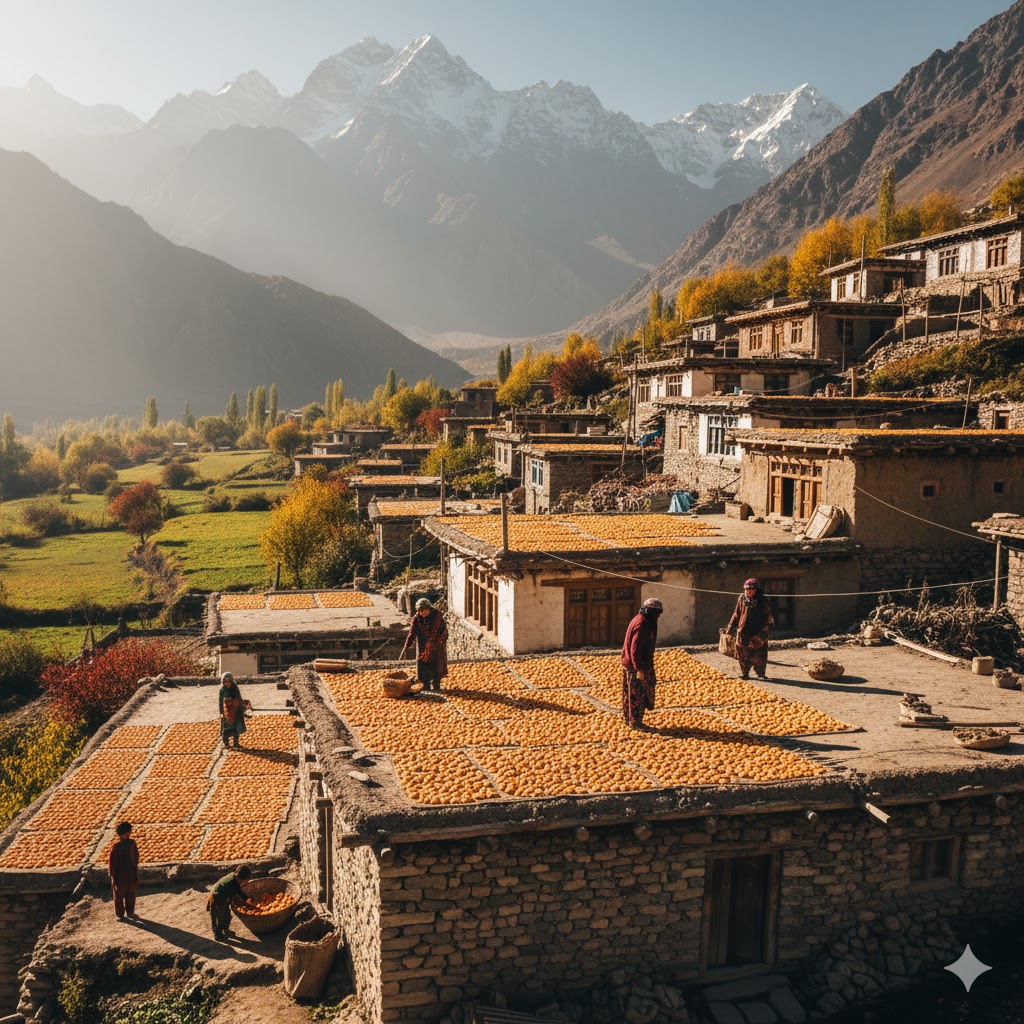
🕌 Spiritual Harmony & Festivals
Hunza’s spiritual life blends Ismaili and local traditions, creating an environment of peace and tolerance. Annual events like Ginani Festival (Harvest Celebration) and Nowruz (New Year) celebrate unity, music, and gratitude for the valley’s blessings. Visitors in 2026 can expect vibrant gatherings with traditional dance, local cuisine, and folk poetry echoing across the valleys.
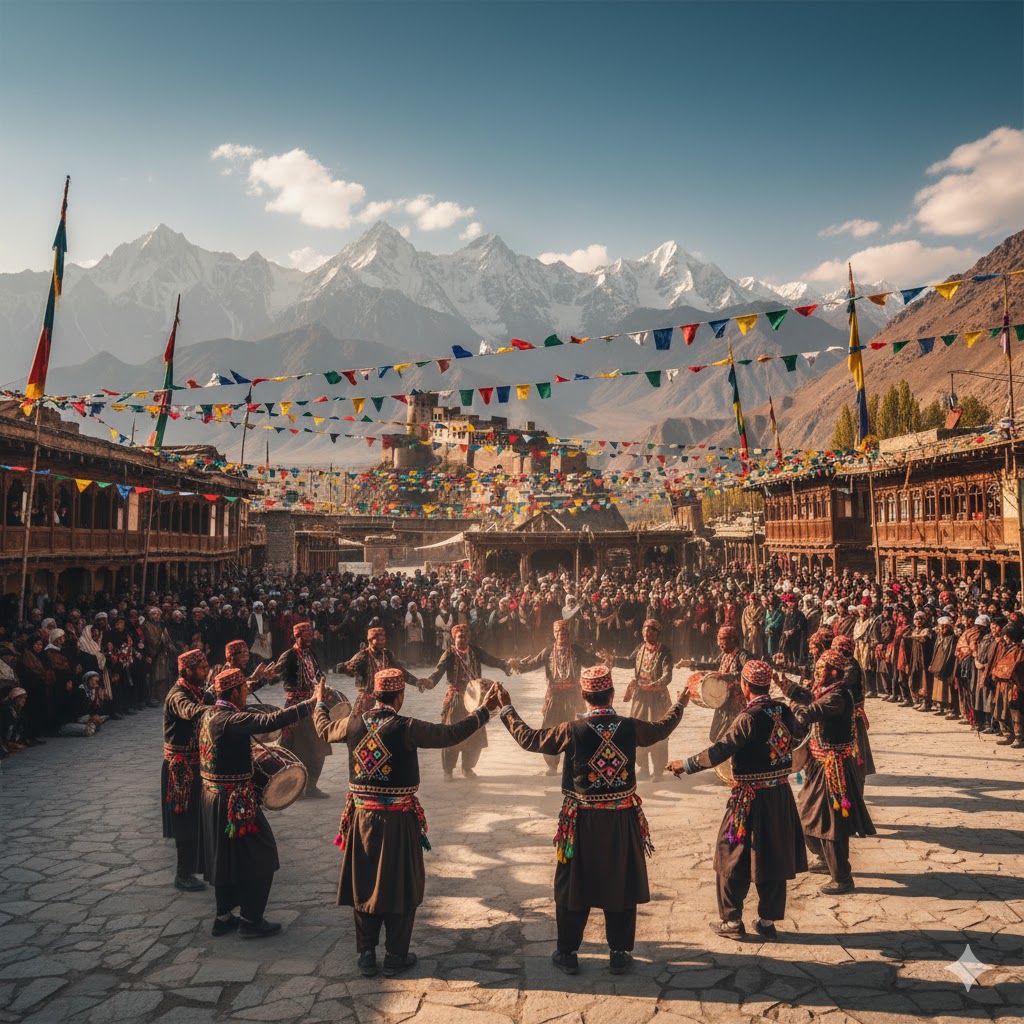
🧭 Local Tip from a Hunza Historian
“Hunza’s beauty isn’t only in its views—it’s in its stories. Every old stone has a name, and every song carries the voice of our ancestors.”
— Rehmat Karim, Heritage Guide at Baltit Fort
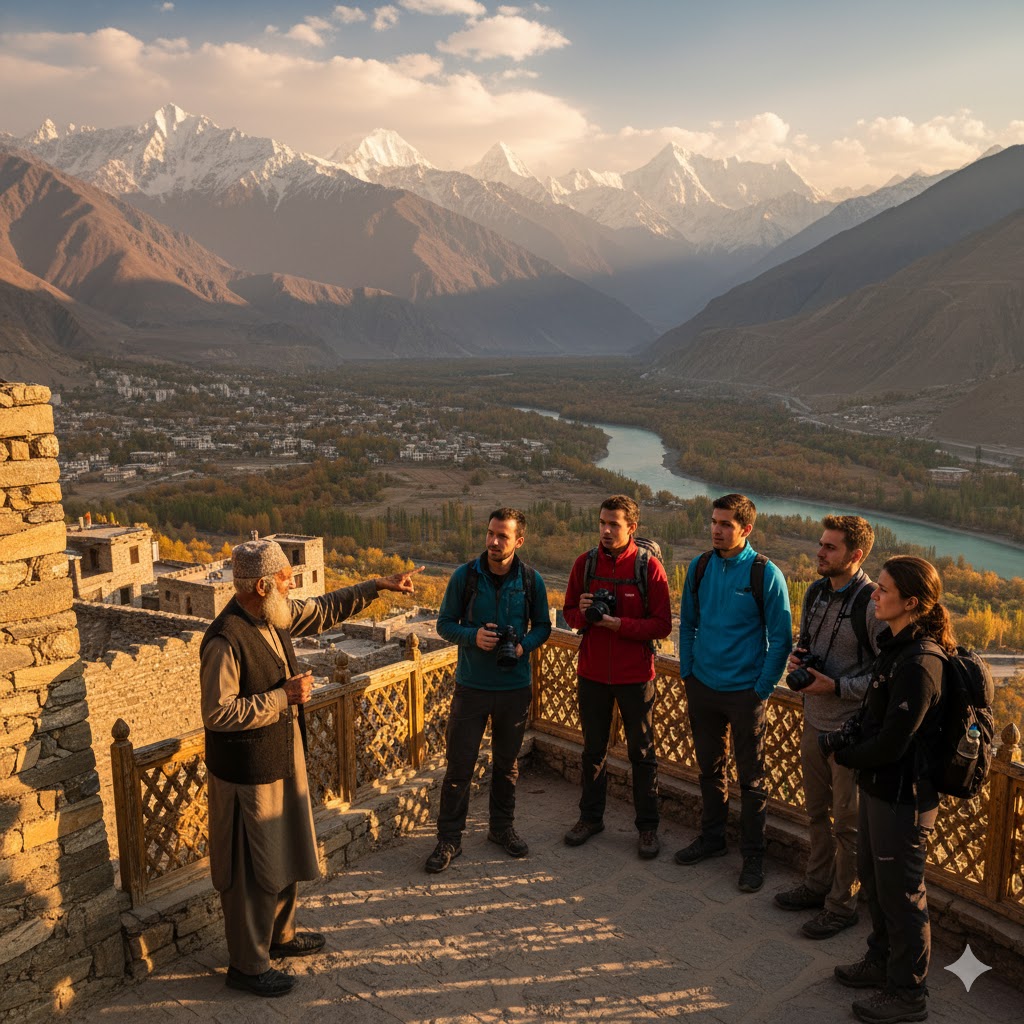
🏰 Must-Visit Heritage Sites in 2026
Here are Hunza’s most captivating cultural stops to explore:
| Site | Significance | Entry Fee (Approx.) | Tip |
|---|---|---|---|
| Baltit Fort | 700-year-old royal fort; museum & viewpoint | PKR 800 | Visit near sunset for golden valley views |
| Altit Fort | 900-year-old fort with restored royal garden | PKR 600 | Enjoy local tea at Kha Basi Café |
| Ganish Village | UNESCO-nominated ancient settlement | Free | Explore old mosques and wooden carvings |
| Karimabad Bazaar | Cultural hub for crafts & gemstones | Free | Try apricot oil and handmade shawls |
| Eagle’s Nest Viewpoint | Heritage-friendly resort area | Free | Ideal for sunrise photography |
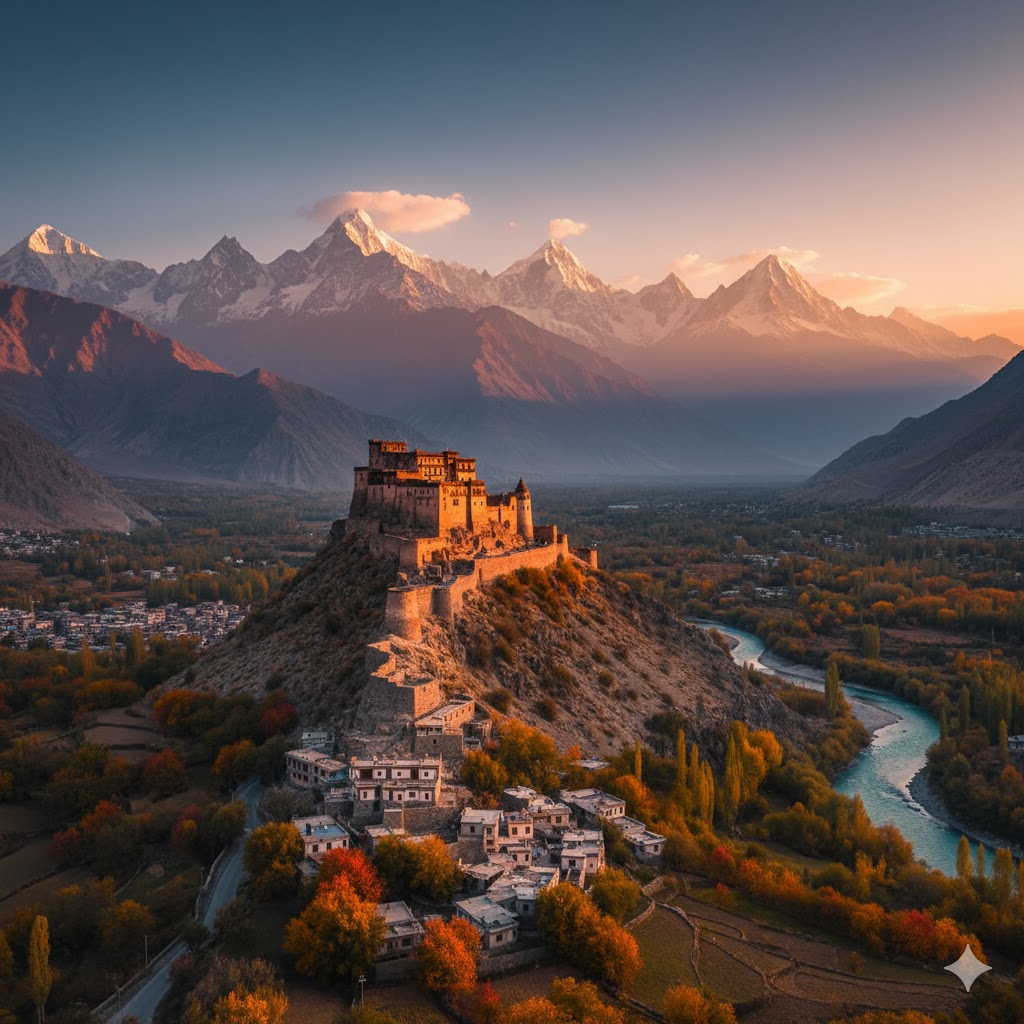
🧺 Handicrafts & Traditional Artistry
Hunza’s artisans still carve walnut wood furniture, hand-weave woolen shawls, and create stone jewelry reflecting the valley’s rich aesthetics. You’ll find these authentic crafts in Karimabad’s local markets, offering not just souvenirs but a piece of Hunza’s story. Purchasing directly supports village women and community development initiatives.
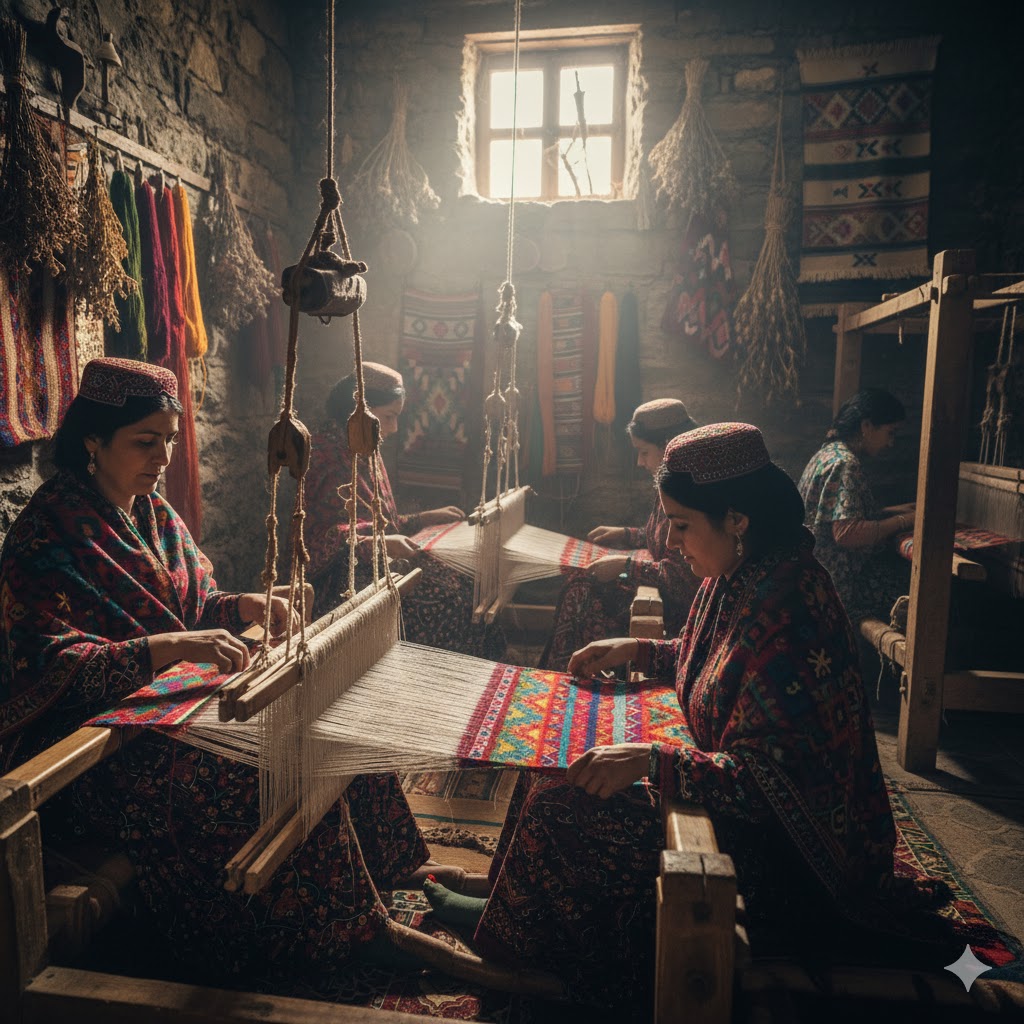
🍵 Taste of Hunza: Culinary Heritage
Hunza cuisine tells tales of survival and simplicity. Staples like Diram Phitti (wheat cake with apricot oil), Chapshuro (meat-stuffed bread), and Butter Tea define everyday life. In 2026, farm-to-table cafés in Altit and Passu highlight organic produce and ancient cooking methods. Each meal reflects generations of adaptation to high-altitude living.
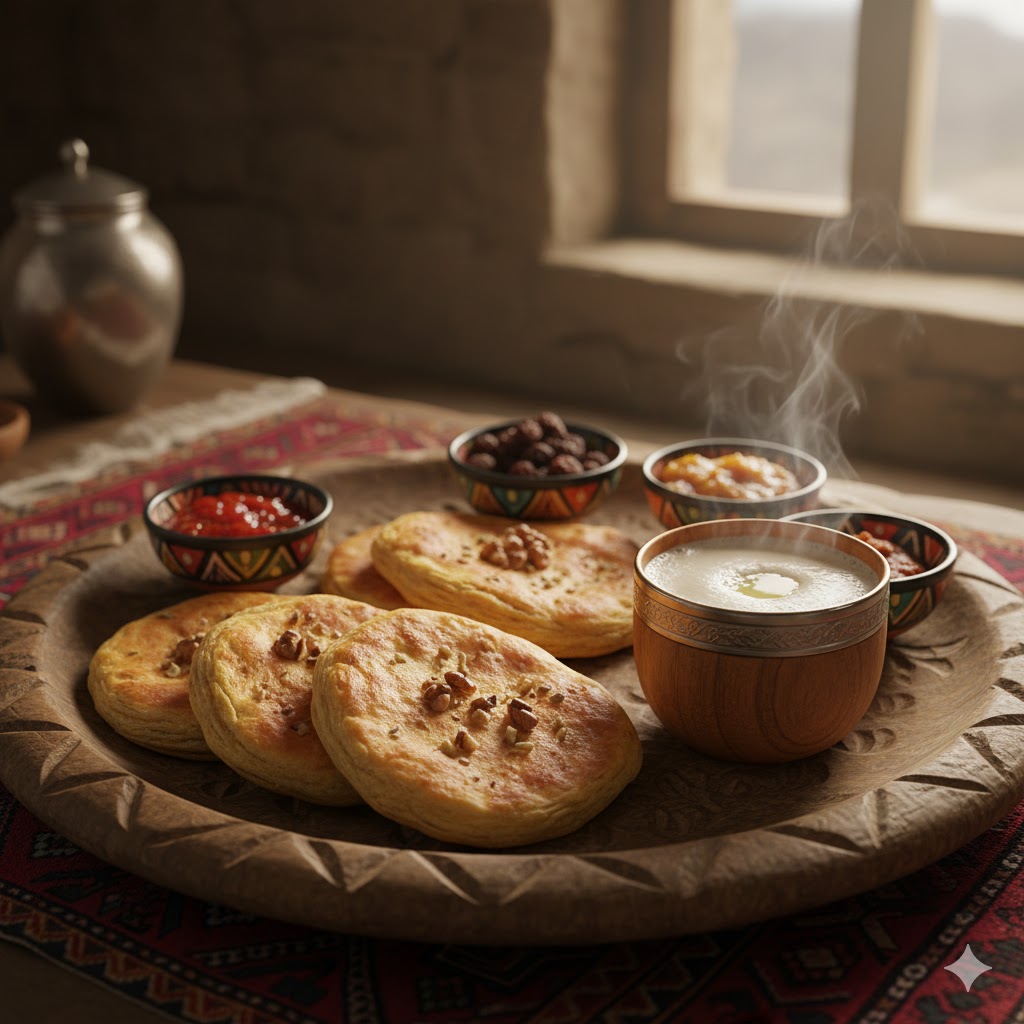
🚙 Access & Sustainable Travel Tips (2026 Update)
- By Road: From Gilgit to Karimabad (2.5 hours, 100 km via Karakoram Highway)
- By Air: Fly to Gilgit from Islamabad (1 hour), then road to Hunza.
- Accommodation: Heritage lodges, eco-guesthouses, and local homestays.
- Sustainability Tip: Carry reusable bottles, respect local customs, and avoid single-use plastics.
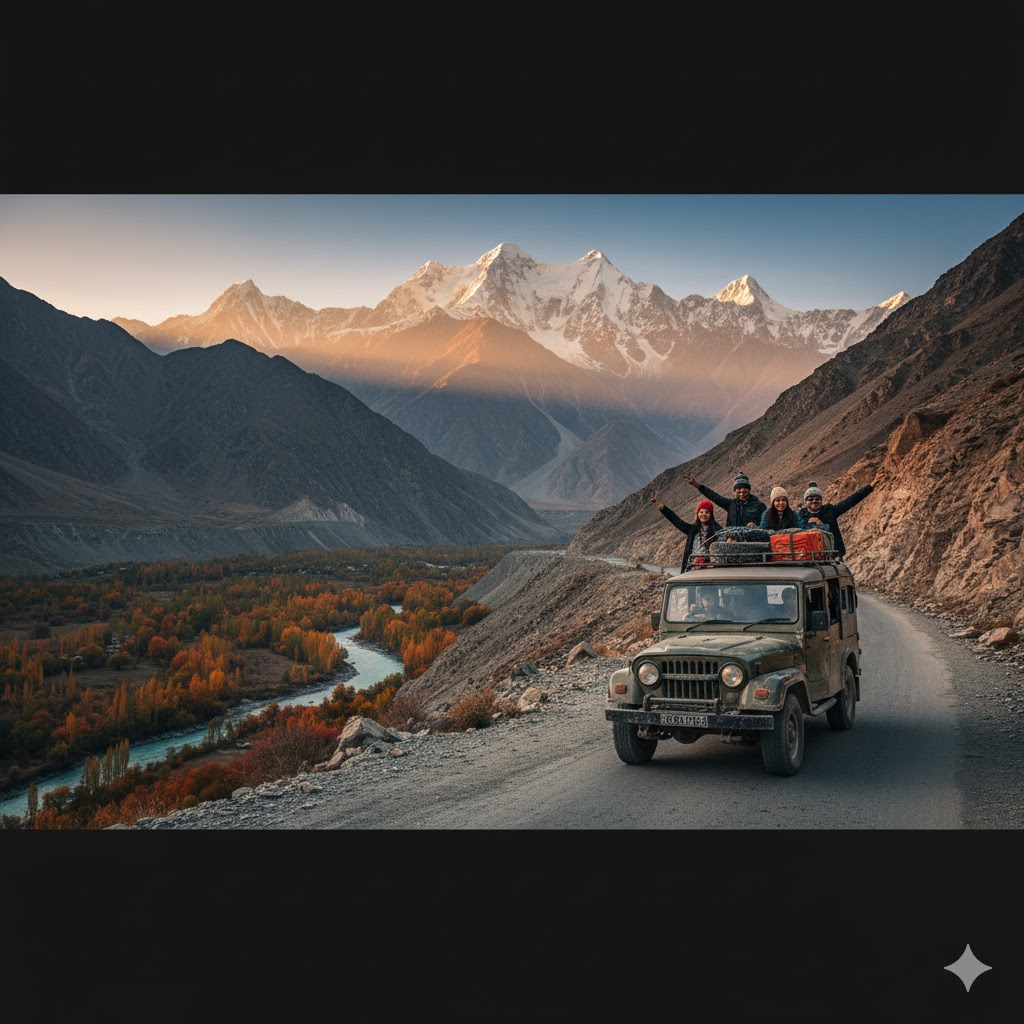
Must See:
Sources:
🕓 Best Time to Visit Hunza
The ideal time to explore Hunza’s heritage is April–October. Spring (April–May) bursts with cherry blossoms, while autumn (October) paints the valley golden. Winter travelers can enjoy snow-capped tranquility but should check road conditions in advance.
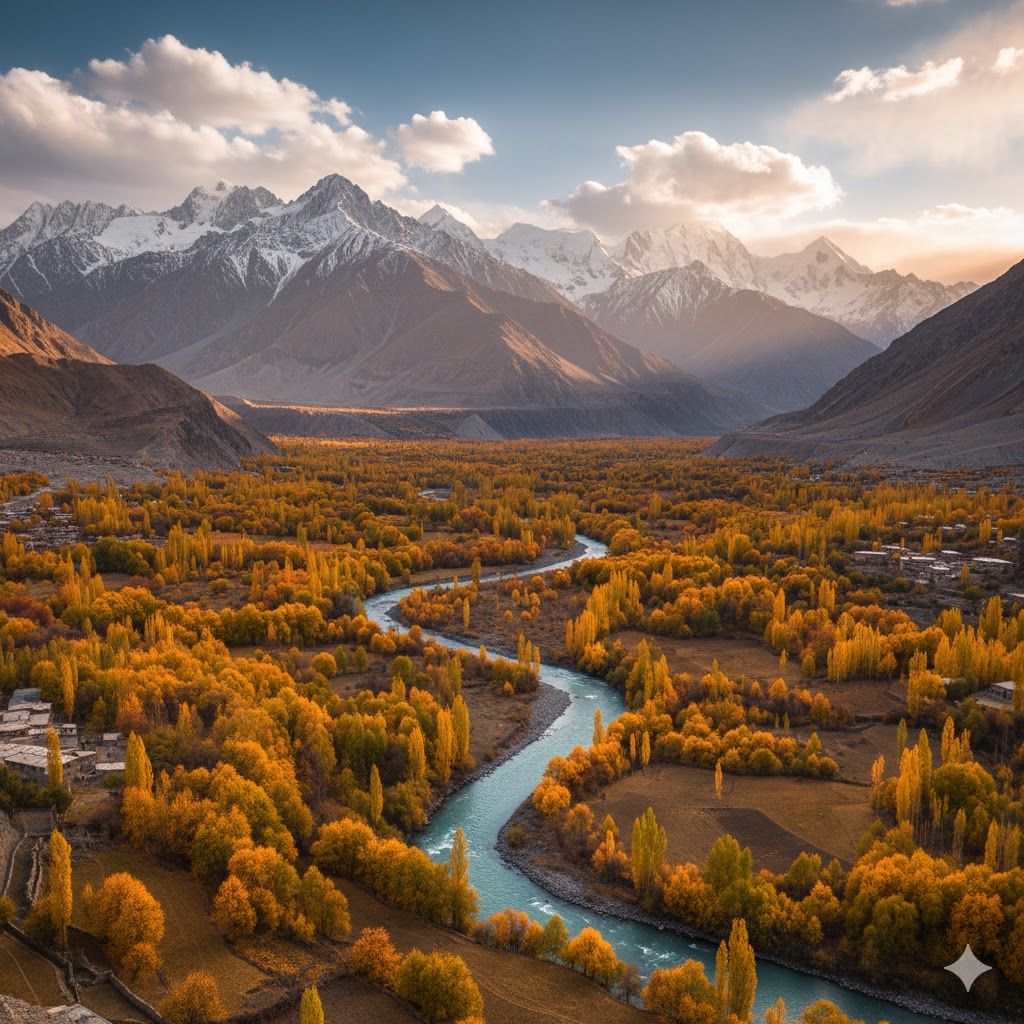
🎒 Backpack Essentials for Heritage Explorers
- Lightweight hiking shoes
- Thermal layers
- Camera & drone (with local permit)
- Refillable bottle
- Local currency (PKR cash preferred)
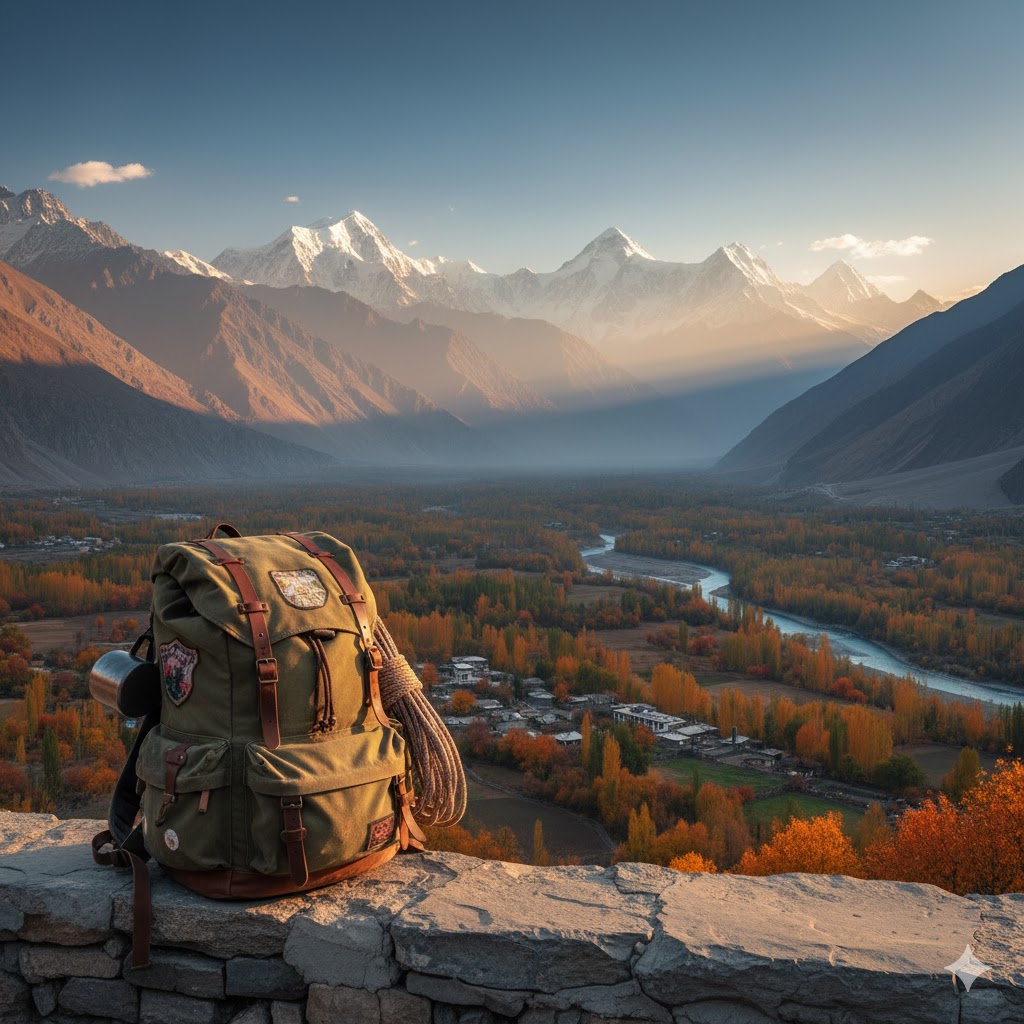
📚 FAQs – Hunza Heritage Guide 2026
Q1. What makes Hunza’s heritage unique?
Hunza’s mix of Tibetan, Central Asian, and local influences shaped a distinctive culture that still thrives in its architecture and traditions.
Q2. Is Hunza safe for travelers in 2026?
Yes, Hunza is one of Pakistan’s safest regions, known for its hospitality and peaceful community.
Q3. What language do people speak?
Burushaski is native, though Urdu and English are widely understood.
Q4. How many days are enough to explore Hunza’s heritage?
A 5–7 day itinerary allows you to explore forts, villages, and festivals comfortably.
Q5. Are there local guides available?
Yes, licensed guides from Baltit Fort and Altit Fort offer cultural and historical tours.
Q6. Can I photograph people in villages?
Yes, but always ask permission—locals appreciate respectful photography.
Q7. Are eco-lodges available near Karimabad?
Yes, several heritage lodges and eco-resorts blend comfort with cultural authenticity.
Q8. How can I contribute to local heritage preservation?
Support local crafts, stay in community-run lodges, and donate to conservation programs by AKCSP.
Traveler Guide: Hunza — A Living Heritage for the Future
In 2026, Hunza stands as a symbol of sustainable tourism, where preservation meets modern adventure. Its people safeguard stories carved in stone and sung in valleys. Visiting Hunza isn’t just a journey—it’s participation in a living heritage that continues to inspire, teach, and unite across generations.
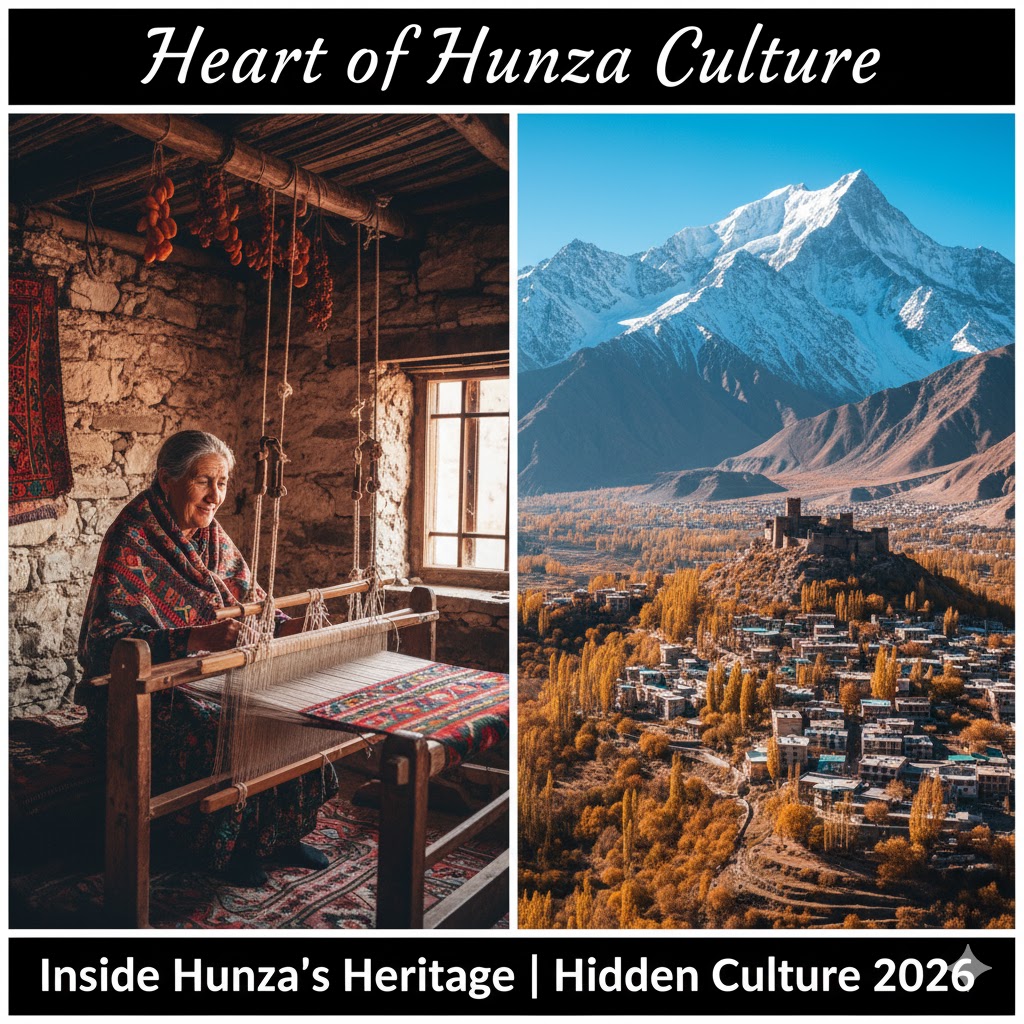
Hunza Heritage Guide 2026: Festivals, Hidden Gems & Extended Itinerary
🎉 Cultural Festivals of Hunza (2026 Edition)
Hunza’s festivals are not mere events—they’re vivid expressions of gratitude, unity, and ancestral pride. Each festival revives centuries-old customs that tie the community to its land and faith. As you plan your 2026 journey, aligning your visit with these celebrations will give you a deeper insight into the valley’s living culture.
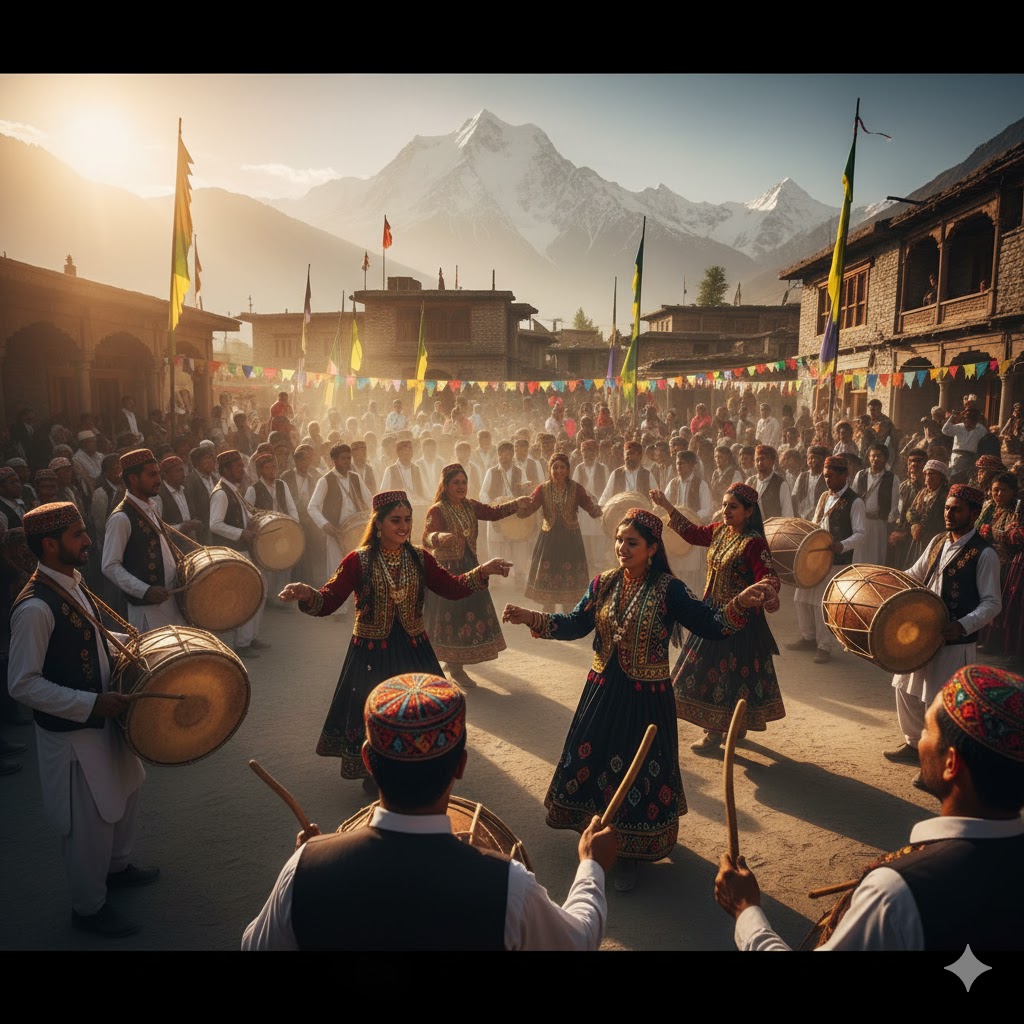
🌾 1. Ginani Festival (Harvest Celebration)
Cultural Origin: The Ginani Festival dates back centuries, marking the beginning of the harvest season. It’s a tribute to the blessings of nature, food, and unity.
Highlights: Traditional music, communal feasts, wheat field blessings, and folk dances performed by both men and women in colorful robes.
Hidden Gem Tip: Head to Altit Fort’s Royal Garden, where locals perform the “Damal” dance under apricot trees.
Local Tip: Try the traditional dish Diram Phitti offered to visitors during the festival.
Access & Hospitality: Free entry; best enjoyed mid-June. Stay in Karimabad for the most authentic experience.
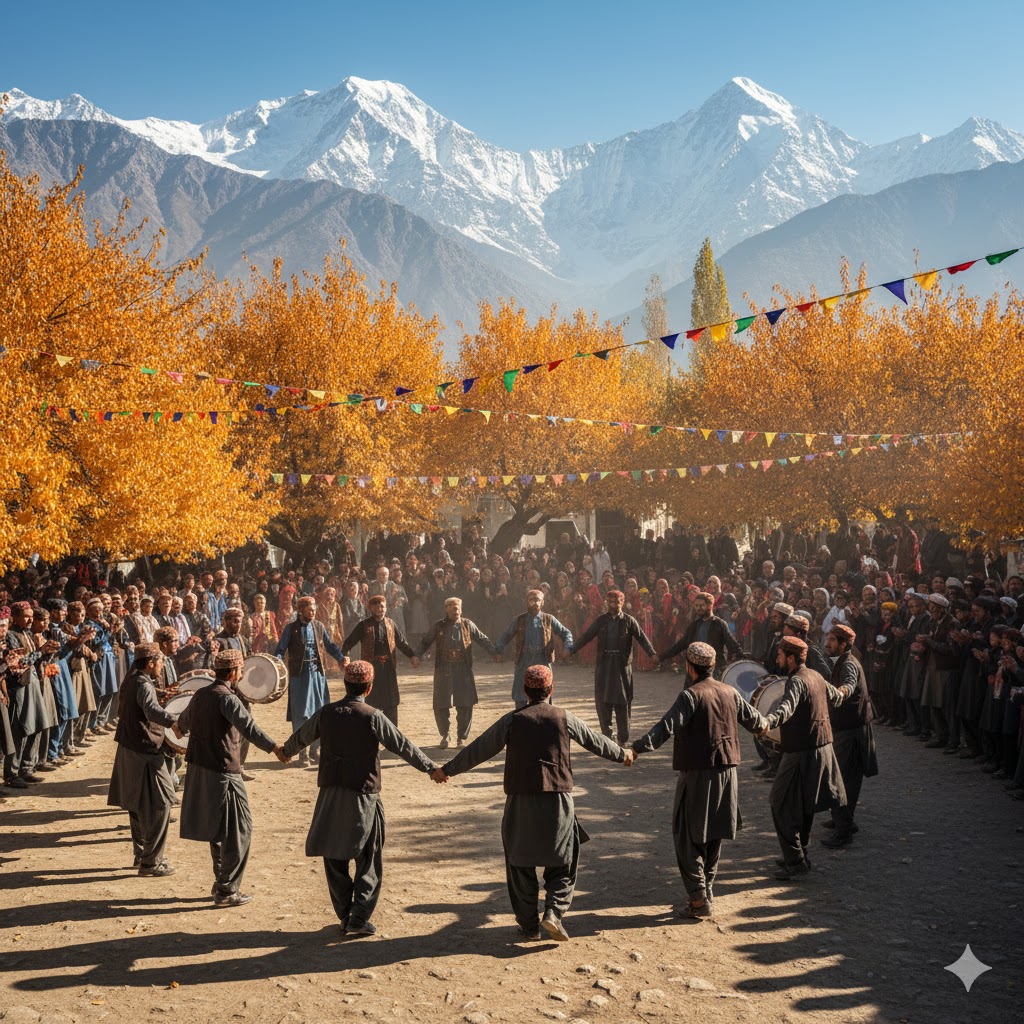
🔥 2. Taghm Festival (Winter Bonfire Tradition)
Cultural Origin: The Taghm Festival symbolizes purification and hope as locals welcome the New Year in the cold mountain nights.
Highlights: Bonfires illuminate the villages; young people dance and sing traditional songs, symbolizing warmth and community.
Hidden Gem Tip: Experience Taghm in Ganish village, where the bonfires light up centuries-old wooden houses—creating a magical visual contrast.
Access & Hospitality: Held in December; warm hospitality, local music, and open feasts.
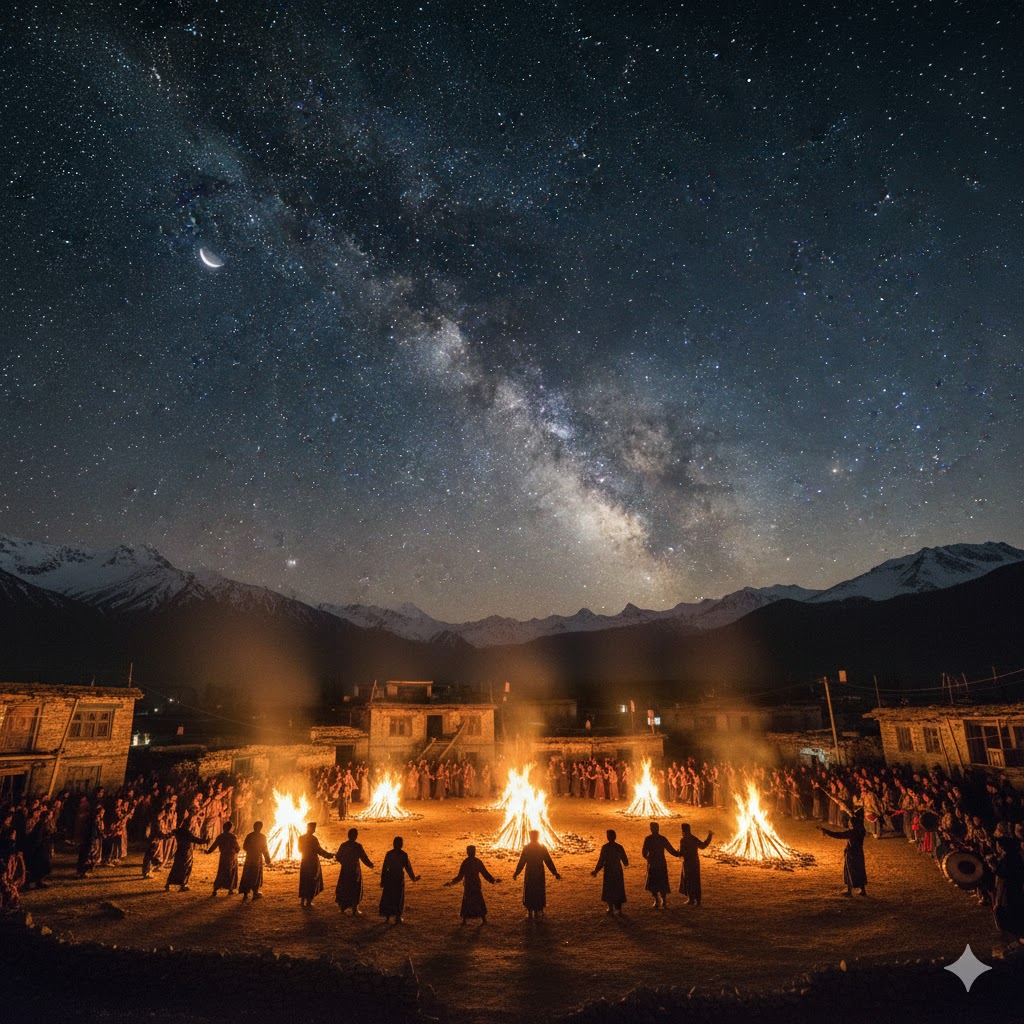
🌸 3. Nowruz (Persian New Year Celebration)
Cultural Origin: Celebrated on March 21st, Nowruz connects Hunza to its ancient Persian cultural roots. It marks renewal, planting season, and spiritual balance.
Highlights: Families clean their homes, cook special meals, and gather to pray for prosperity.
Hidden Gem Tip: Visit Gulmit village for its authentic Nowruz gatherings and traditional apricot-seed offerings.
Ticket Info: Free; open community participation.
Local Advice: Arrive early morning to enjoy local storytelling sessions.
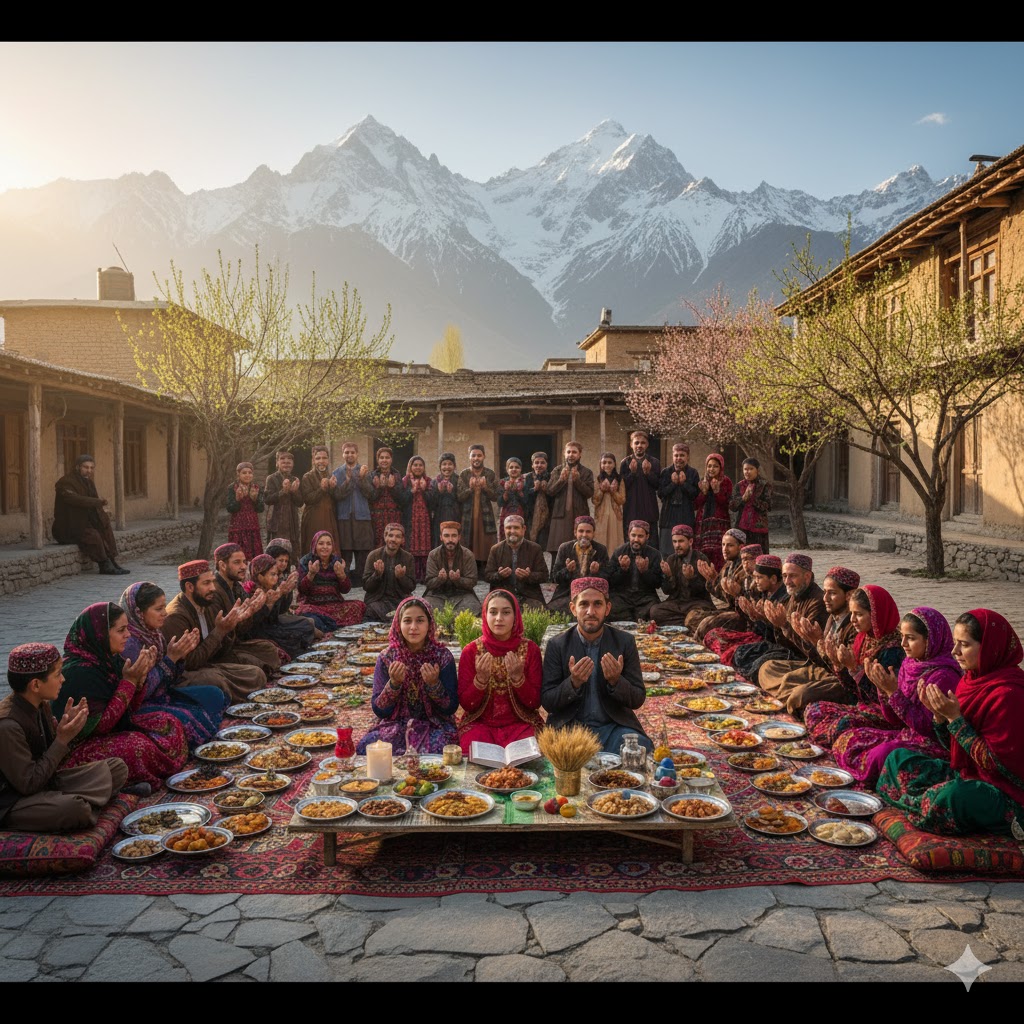
🏔️ 4. Silk Route Festival (Modern Heritage Revival)
Cultural Origin: A new festival blending ancient trade history with modern tourism, launched to celebrate Hunza’s role in the historic Silk Route.
Highlights: Cultural exhibitions, ancient trade reenactments, crafts displays, and folk music.
Hidden Gem Tip: Don’t miss the Silk Road Parade in Karimabad showcasing traditional costumes from surrounding valleys.
Ticket Info: PKR 500 (local entry), PKR 1000 (foreign visitors).
Local Advice: Bring a camera—sunset shots over the parade are breathtaking.
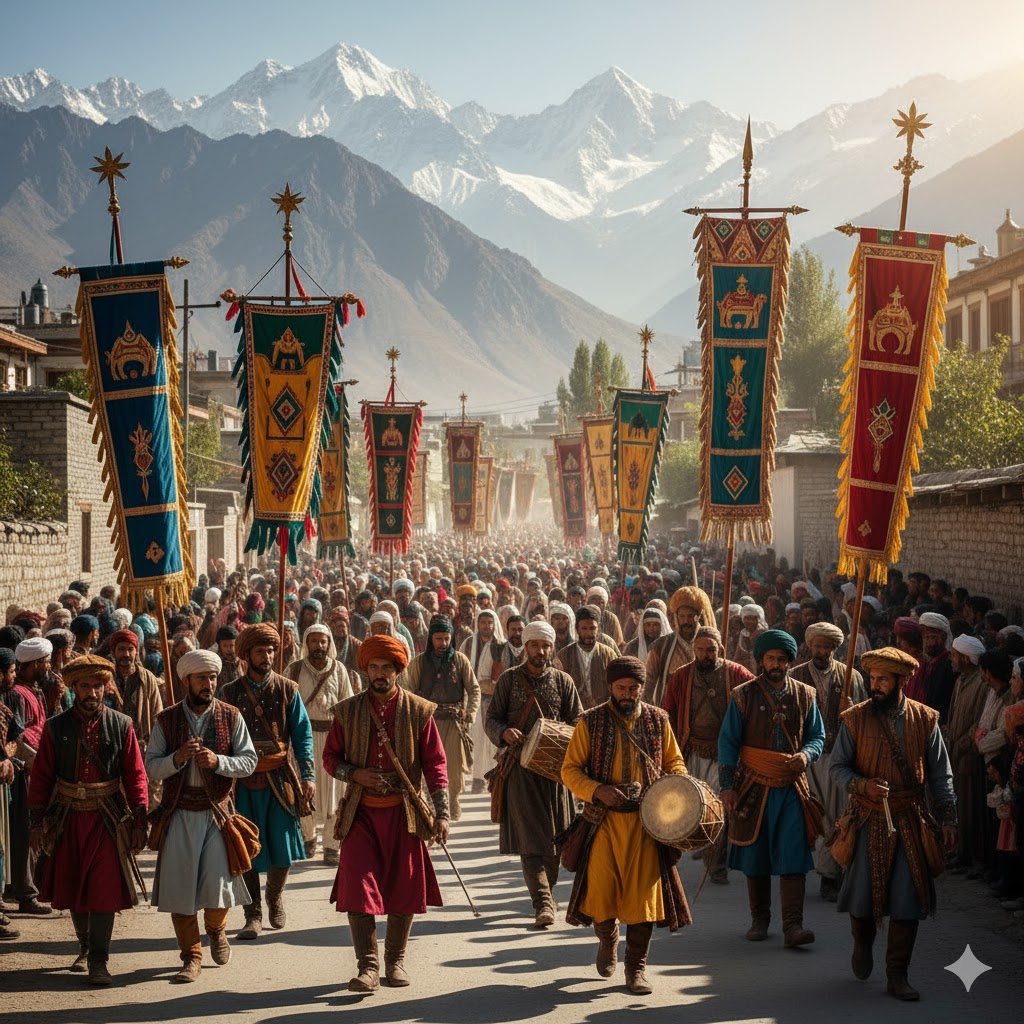
🌄 Hidden Gems of Hunza You Shouldn’t Miss
Hunza is filled with famous attractions, but its true charm lies in the quiet corners few travelers find.
💧 1. Ganish Old Settlement
One of the oldest living settlements in Hunza, Ganish is a UNESCO-nominated heritage site known for its intricate wooden mosques, narrow alleys, and centuries-old water channels.
Local Tip: Visit early morning for perfect lighting on the ancient wooden balconies.
Hidden Detail: The wooden mosques here have hand-carved verses that date back to the 16th century.
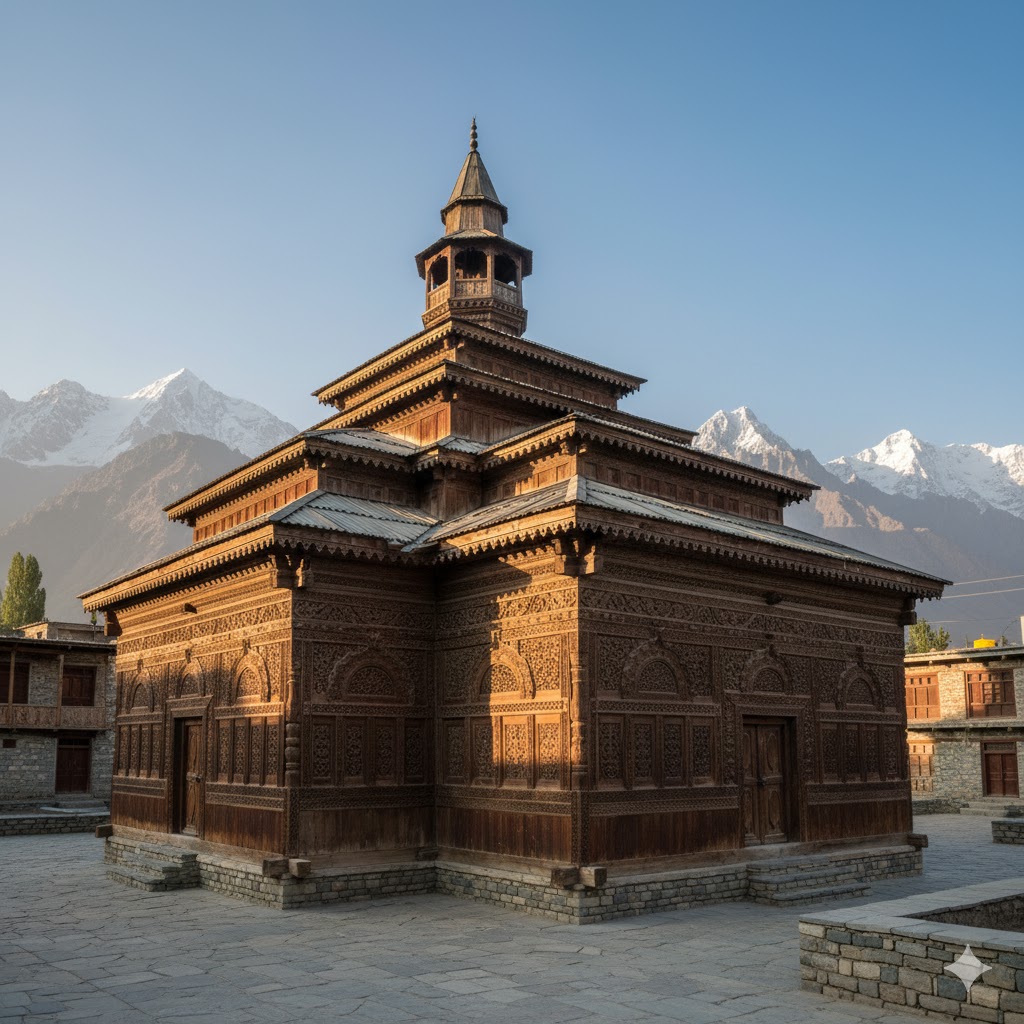
🌅 2. Duikar Eagle’s Nest Viewpoint
Located above Karimabad, this spot offers the most panoramic sunrise and sunset views in Hunza—a favorite of photographers.
Hidden Gem Tip: Arrive before dawn for tea at the nearby lodge; watch the valley awaken beneath pink skies.
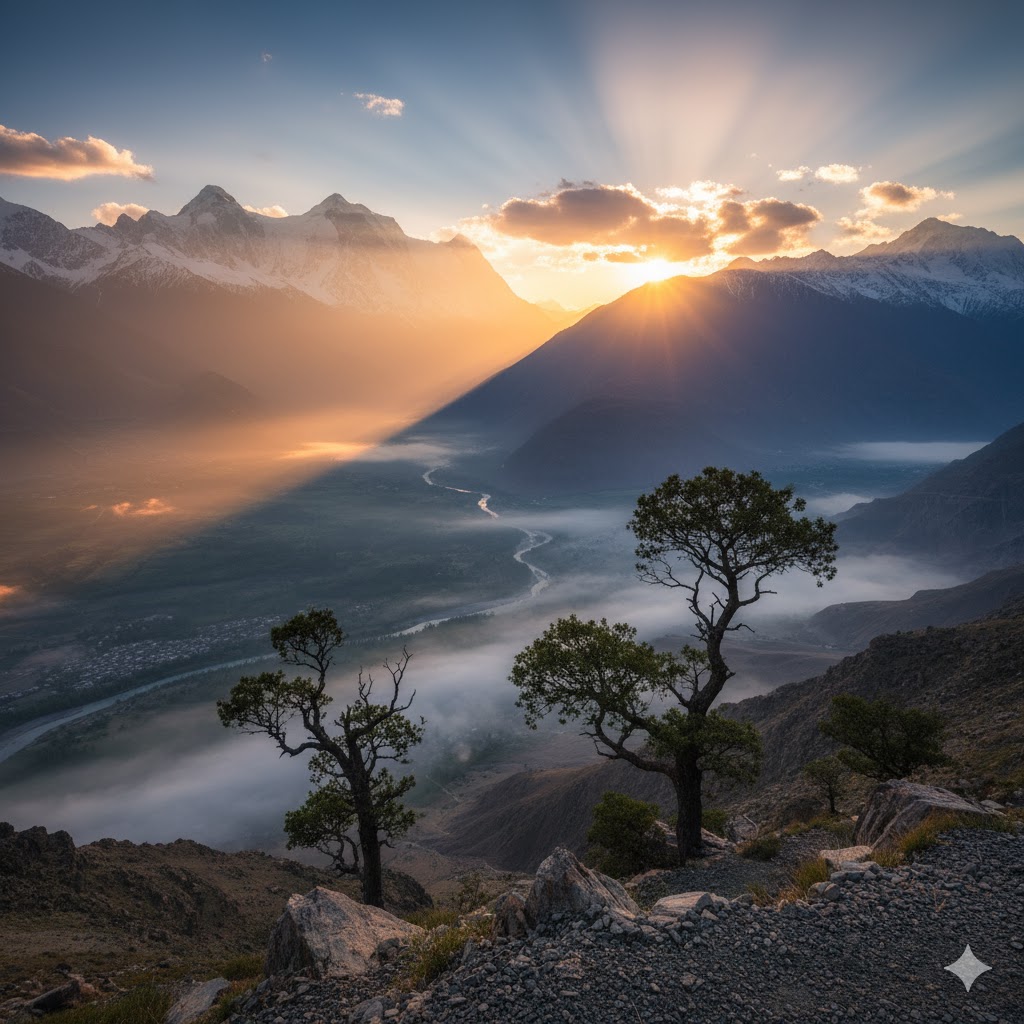
🏔️ 3. Hopper Glacier & Nagar Valley
Across the river from Hunza lies the Hopper Valley, home to the advancing Hopper Glacier. It’s quieter and offers an untouched wilderness vibe.
Access: 45-minute drive from Karimabad.
Local Tip: Trek to the glacier’s edge with local guides and enjoy fresh apricots from nearby farms.
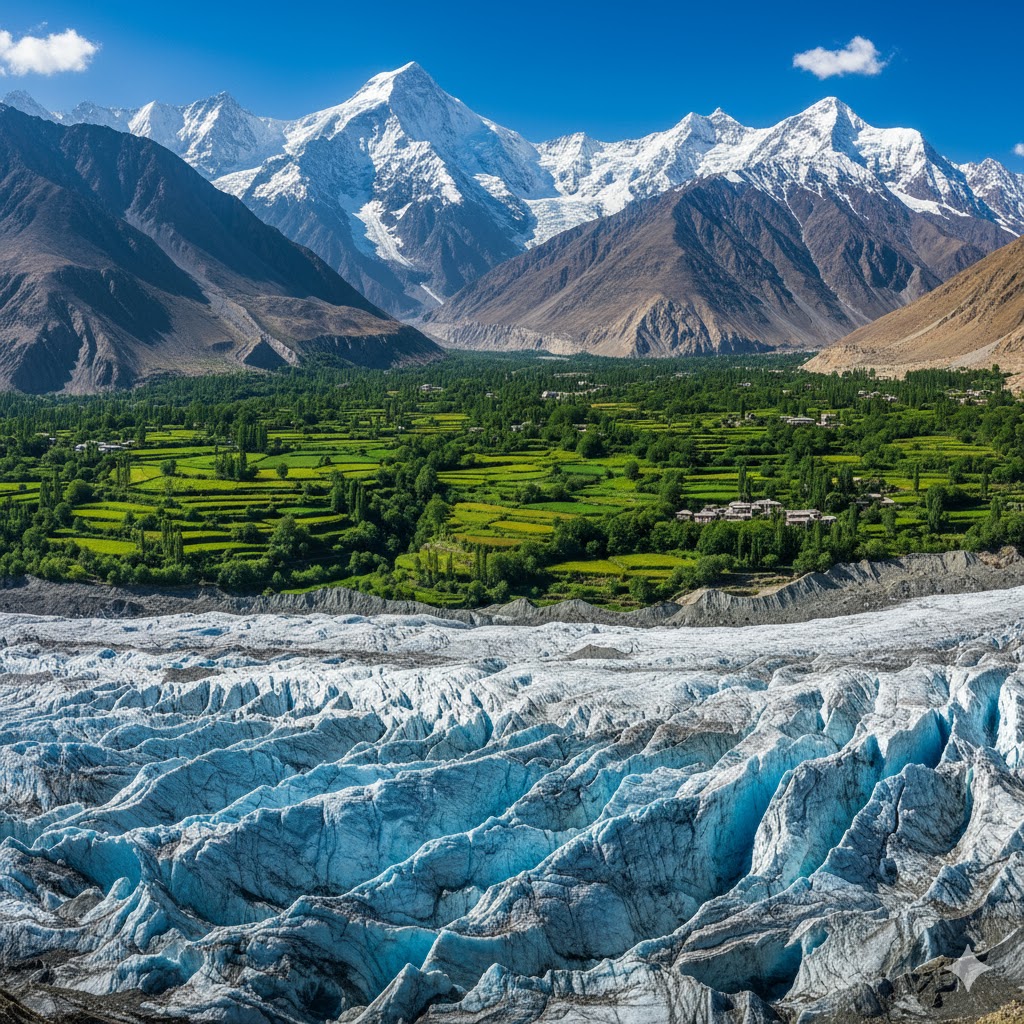
🌉 4. Hussaini Suspension Bridge
This rope bridge near Passu has become iconic—but few know its cultural value. Built by locals for village connection, it symbolizes resilience and unity.
Hidden Gem Tip: Visit early morning for reflections on the turquoise Hunza River.
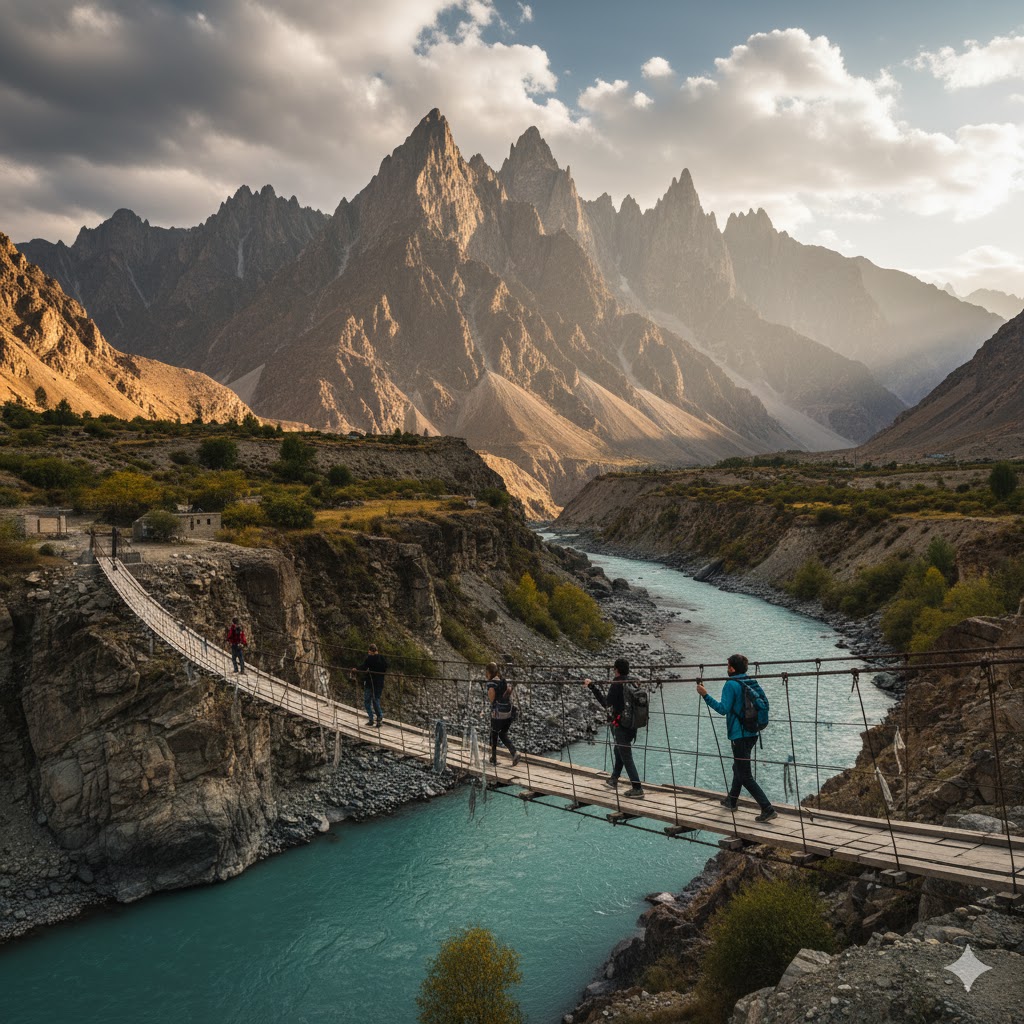
🌸 5. Attabad Lake (Heritage in Transition)
Formed by a 2010 landslide, Attabad Lake transformed tragedy into beauty. Locals have since developed eco-lodges and boating services that sustain communities.
Local Tip: Enjoy a boat ride at sunset; talk to locals about the lake’s transformation story.
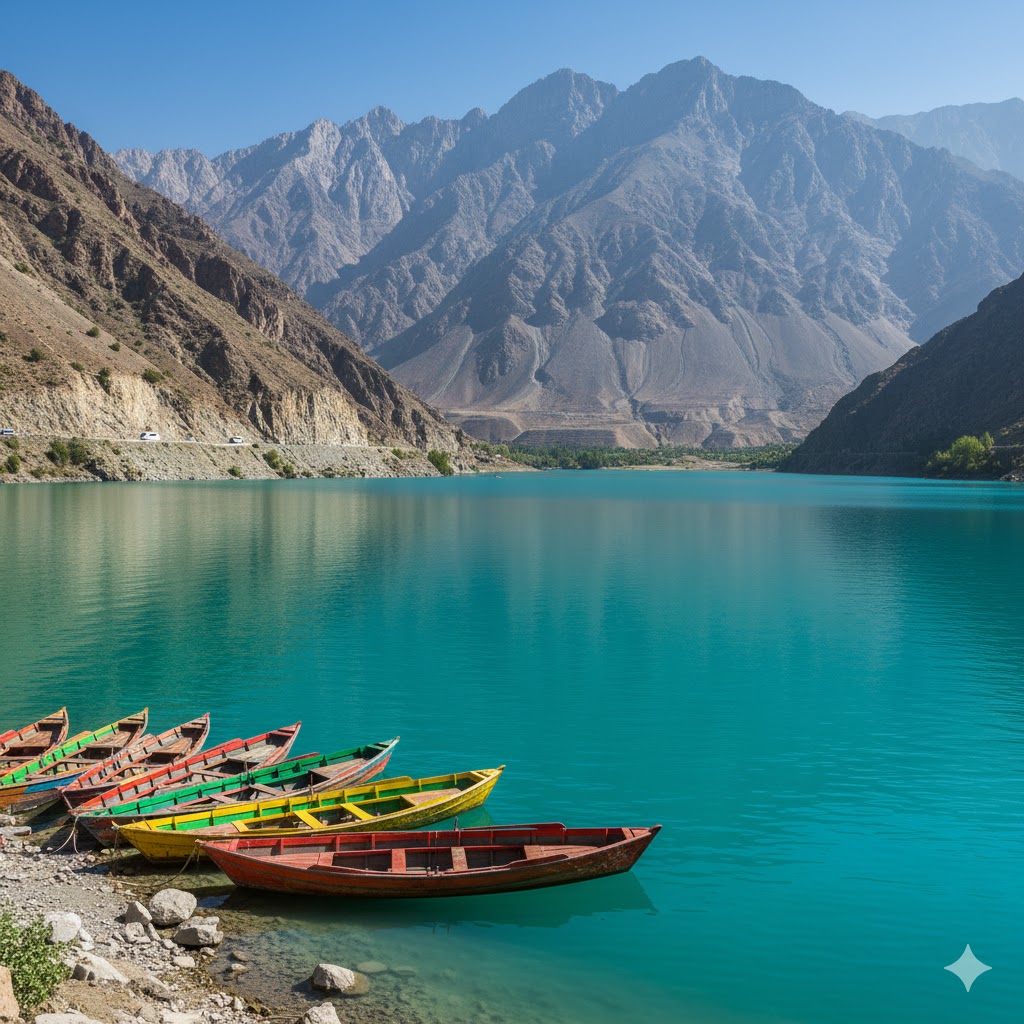
🧭 Extended Itinerary – 7-Day Hunza Heritage Experience (2026)
Here’s a balanced 7-day cultural itinerary perfect for travelers who want to absorb Hunza’s history, cuisine, and soul:
| Day | Highlights | Tips |
|---|---|---|
| Day 1: Arrival in Karimabad | Visit Baltit Fort, evening stroll through bazaar | Try local walnut cake at Café de Hunza |
| Day 2: Altit Fort & Heritage Walk | Explore Altit Royal Garden, meet local artisans | Enjoy lunch at Kha Basi Café |
| Day 3: Ganish & Hopper Valley | Guided heritage tour + glacier visit | Hire local guide for storytelling experience |
| Day 4: Passu Cones & Hussaini Bridge | Photography + boating at Attabad Lake | Wear comfortable shoes for the bridge |
| Day 5: Duikar Eagle’s Nest | Sunrise photography + explore organic farms | Great for aerial drone footage |
| Day 6: Festivals & Local Cuisine | Join Ginani or cultural night (if seasonal) | Respect local customs during dances |
| Day 7: Relaxation & Shopping | Buy handmade shawls and apricot oil | Pack responsibly for return journey |
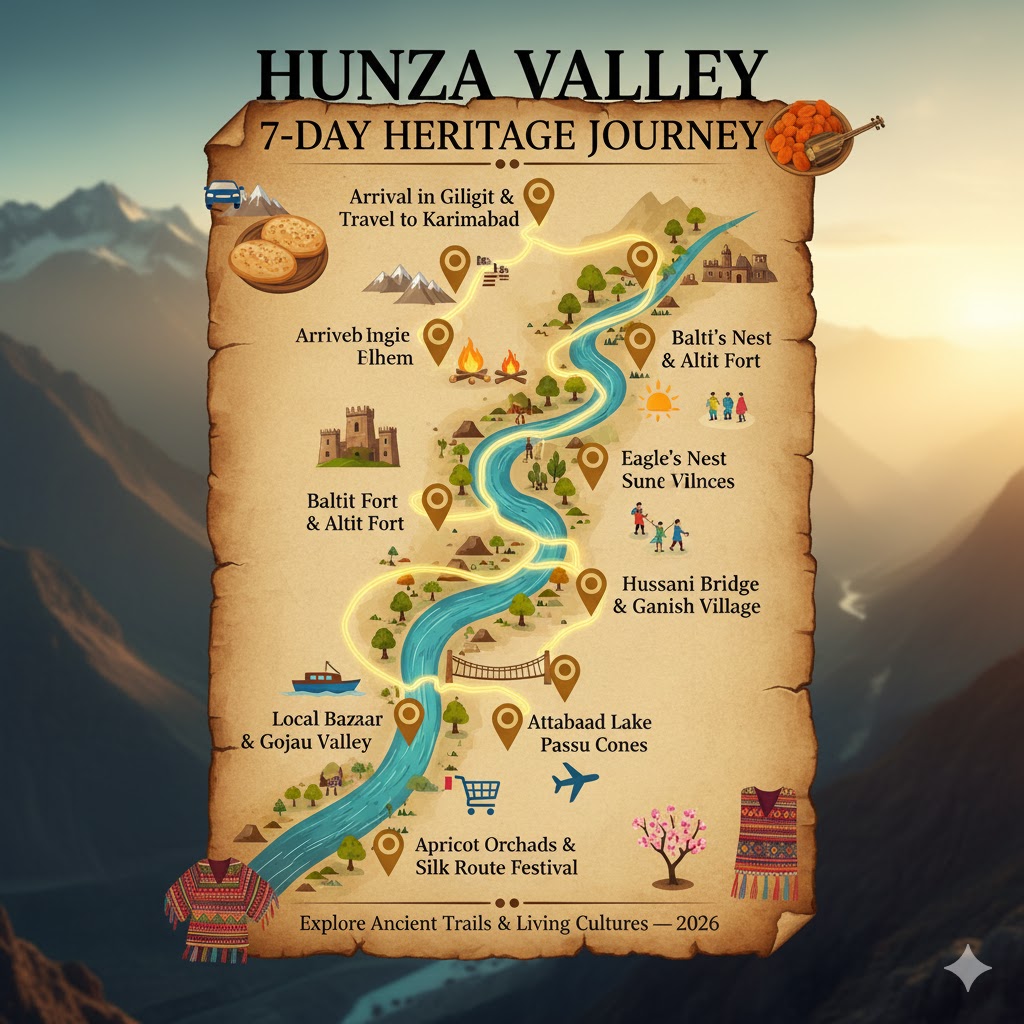
💡 Local Expert Tip
“Every traveler leaves Hunza with something invisible—a story, a melody, or a memory that becomes part of its living heritage.”
— Saira Hunzai, Cultural Researcher & Guide
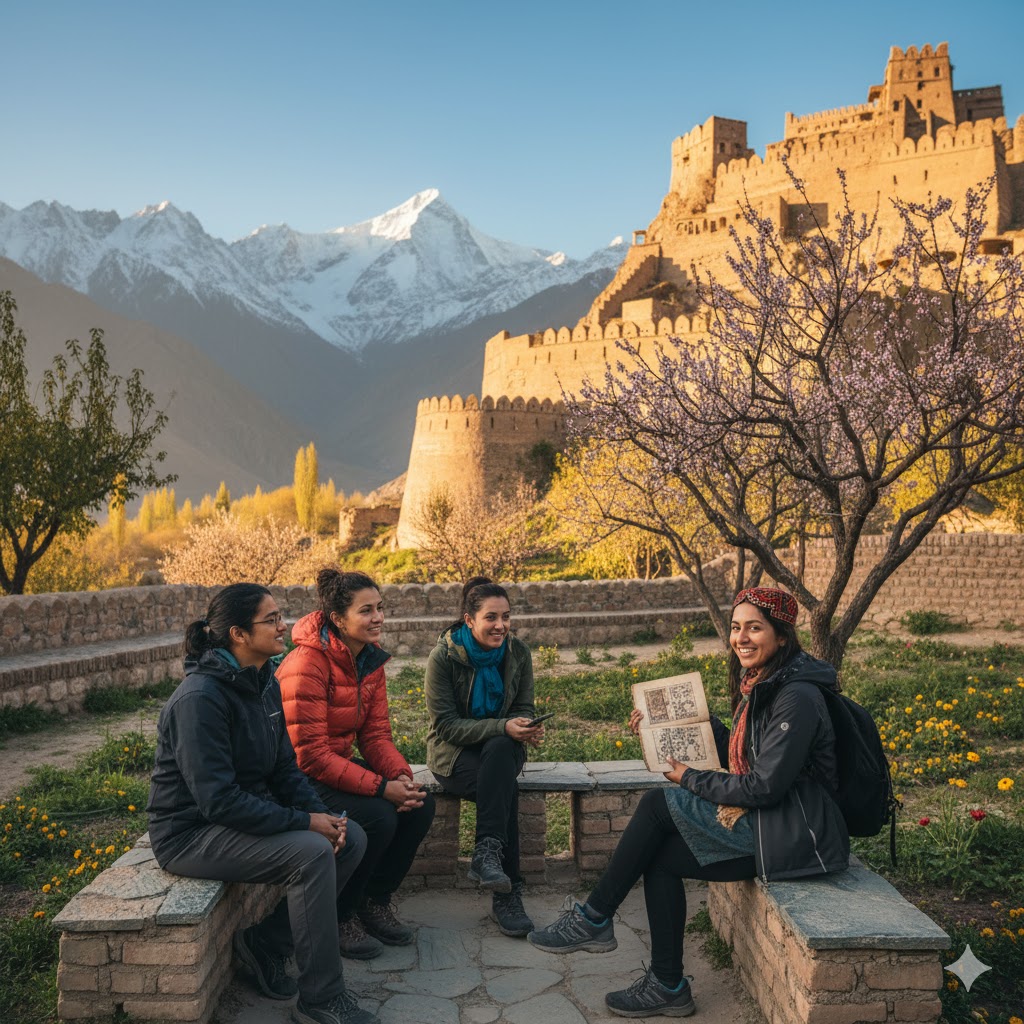
🧭 Conclusion: Hidden Soul of Hunza Heritage
Beyond its scenic peaks and legendary forts, Hunza’s true essence lies in the simplicity of its people and the stories that echo through every stone wall. As you trace the trails of traders, farmers, and poets, you become part of Hunza’s evolving story—a heritage shared and renewed by every visitor.
